When you think about getting high, people like Snoop Dogg, Wiz Khalifa, and Willie Nelson may come to mind. You may even have a nostalgic flashback to classic stoner films like Cheech & Chong, Pineapple Express, The Big Lebowski, or How High. But do you know what it actually feels like to experience a weed high?
The feelings can vary from person to person depending on the strain, dosage, consumption method, and personal tolerance. Still, there are a few characteristics to be aware of, especially if it’s your first time using cannabis.
Some users report feeling happy or relaxed, while others may note the giggles, feelings of altered time, and the munchies. But marijuana can also cause adverse effects, especially if you are inexperienced. Below, we’ll go over what to expect together, so there are no surprises.
What does it mean to be high?
Being high is typically associated with experiencing the euphoric, uplifting, cerebral effects of cannabis or the sensation of being sedated or relaxed. The experience is highly based on the individual and depends on variables such as the strain’s potency, consumption method, and cannabis tolerance.
While most people feel happy, creative, giggly, or more social when high, some experience anxiety and paranoia as it settles into the mind and body, especially for occasional cannabis smokers with no tolerance for smoking marijuana.
THC & Other Cannabinoids
Cannabinoids are found in the cannabis plant and are produced naturally by the human body. We have an endocannabinoid system (ECS) that internally produces cannabinoids. These compounds are essential to maintaining internal balance through many different body systems.
Cannabinoids interact with the human endocannabinoid system to help maintain functional balance through messenger molecules and receptors. Their beneficial effects can help to regulate sleep, energy, cardiovascular function, and reproduction, relieve stress and manage anxiety, chronic pain relief, motivation, appetite, and digestion.
The two well-known cannabinoids in cannabis are tetrahydrocannabinol (THC) and cannabidiol (CBD). A common misconception is that there are only two; however, there is a broad range of many other cannabinoids.
The word cannabinoid can refer to THC or any chemical that acts on cannabinoid receptors. They are naturally occurring chemicals present in the cannabis plant. Still, there is even a synthetic cannabinoid called HU-210 that delivers no adverse side effects, meaning that it could be helpful for pharmaceutical companies in developing new drugs. While marijuana is still considered an illicit drug federally, developing new medications without using illegal marijuana will prove challenging in some areas.
Marijuana & The Brain
The THC cannabinoid interacts with the CB1 receptors located in the human brain. This area is responsible for many mental processes, including decision-making and retaining memories.
This powerful compound provides excitement, euphoria, focus, calm, and more. The results can be intense for some cannabis users, while others enjoy certain strains’ relaxing qualities or creativity boosts.
Stages of Being High
As THC moves through your bloodstream, the intensity may change throughout the experience. For example, euphoria tends to peak at the highest concentration of THC, while feelings of calm usually set in after that.
The sensations of being high from smoking weed may include:
- Deep Physical Relaxation
- Cerebral euphoria
- Happiness- Laughing & Giggling
- Increased Hunger or Cravings (Munchies)
- Being Joyful and Uplifted
- Sensitivity to color, touch, smell, light, taste, or sound
- Heightened Creativity & Focus
Factors of Your High
When asking the question, “what does it feel like to be high,” one must consider the following factors before ingesting marijuana.
Strains & Terpenes
- Cannabis Indica strains produce airy, more developed buds than Sativa. It originates from the Kush region near Afghanistan and is from a colder, mountainous climate. Indica leaves are shorter and bushy and have dark, whole leaves and clumpy buds. It has higher THC and lower CBD and is known for its relaxing high. This weed is excellent for nighttime due to its physical high and pain-relieving effects.
- Sativa weed plants are from warmer climates, producing tall, long leaves and dense, thick buds during the flowering stage. Cannabis sativa has more CBD cannabinoids and less THC and is the perfect strain to consume in the morning due to its energetic, cerebral high.
- Hybrids are cross-germinated from two different strains to form a combination of Indica and Sativa. Typically, one or the other will be dominant and will, in turn, produce the effects experienced by the user. Hybrid strains of Cannabis remain prevalent and offer a more balanced high.
Cannabis Sativa strains produce terpenes, which are small molecules in cannabis buds that create their smell and taste. They are found in many natural plants, fruits, and flowers other than Cannabis. Over a hundred unique terpenes have been identified, and various combinations in different strains of Cannabis create distinctive flavors and aromas.
Scientific research shows terpenes can also affect energy, mood, sleepiness, and alertness. Terps can also play a significant role in the psychoactive effects of Cannabis sativa, including its ability to affect sleep. Scientists are still learning about how terpenes affect the body and mind.
Consumption Methods
The market is vast among cannabis products, from dried buds and tinctures to vape pens, concentrates, and edibles. Weed can be vaped, eaten, applied orally, and used topically. The most common methods of use are:
- smoking weed
- vaping cannabis
- cannabis edibles
Marijuana affects everyone differently, and THC absorption also differs depending on the method. When smoking, the cannabinoids quickly enter the lungs and bloodstream, and the person very quickly reaches a peak high. It usually onsets within a few minutes.
With oral cannabis administration, however, it has to travel through the digestive tract, slowing down the absorption process into the blood. It can take up to an hour for the effects of the edibles to kick in fully.
Tolerance/ Use Frequency
Similar to most other substances, the more you use cannabis, the higher your tolerance. It can drop quickly after using it too. If you’re new to cannabis, start low and slow. Your tolerance will increase as you ingest, smoke, or vape marijuana more frequently, affecting your preferred dose and how much THC you can tolerate.
Metabolism & Food Intake
Research shows that fatty foods and cannabis consumption deliver the ideal subjective and physiological effects, although the onset may be delayed as the body breaks down the cannabinoids. Cannabinoid absorption can also be impacted by body weight, what you eat, strain, and consumption methods. If you’re looking to boost your metabolism, smoking marijuana after eating could be the way to go.
What Does it Feel Like to Be High on Weed Rosin?
The effects of weed rosin can vary from person to person, but generally, it can induce feelings of euphoria, relaxation, and an altered perception of time and space. Users may experience heightened sensory experiences and an increased appreciation for music and art. Some may also feel more introspective and introspective.
Potential Unwanted Side Effects
The potential dangers of using medical marijuana include the following:
- Nausea and vomiting
- Paranoia
- Anxiety
- Increased heart rate
- Dry or Red eyes
- Slowed cognitive function
- Extreme fatigue
Marijuana for medical use does not produce any known severe side effects. However, it’s vital to be aware of the dangers on the lungs and heart of excessively using smoked and vaporized cannabis. A recent study tested regular marijuana smokers and their expired carbon monoxide concentrations before and after smoking low-dose, high-dose, and placebo marijuana cigarettes. Expired air CO doubled following smoking. There were no significant differences in CO levels in the different dose categories, though further research is needed.
Some people fear it might cause too intense of a high, and others have reservations about its legality, considering that marijuana is federally illegal in the United States. It’s crucial to brush up on local laws and choose a high-quality product for pain relief.
If you are on coagulants or blood thinners, you may want to remain cautious with edibles because THC can significantly slow down blood clotting. Remember to discuss using medical marijuana for migraine prevention with your primary care physician, especially if you are scheduled for an upcoming surgery or procedure.
According to the Diagnostic and Statistical Manual of Mental Disorders — published by the American Psychiatric Association — the following criteria are indicative of potential marijuana drug abuse:
- Prolonged marijuana use despite physical or psychological distress
- Prolonged marijuana use despite social or relationship problems
- Marijuana cravings
- Difficulty controlling or reducing cannabis use
- Prioritizing cannabis in favor of other activities
- Causing harm at work, school, and home as a result of marijuana use
- Marijuana use dominates one’s daily schedule
- Risky behaviors during/after marijuana use
- Using more cannabis than is typical
- Cannabis tolerance
- Cannabis withdrawal symptoms such as emotional distress or severe agitation (irritability/anger/depression), difficulty sleeping, and decreased appetite
- Moving on to other drugs with more intense effects
In Conclusion
Not everyone experiences the same results when consuming cannabinoids, and the intensity of those effects also varies. Some people feel relaxed and happy after cannabinoid consumption, while others may feel sleepy or tired.
Weed highs feel different for each individual. Marijuana’s effects will vary based on the person, the strain, and how they use it, among other factors. While weed has been associated with minor side effects, marijuana use is not reported to be fatal.
Still, follow local laws and research before purchasing and using marijuana for recreational or medicinal purposes in any new area. We recommend contacting a reputable dispensary to chat with a knowledgeable budtender. Leafy Mate would be happy to connect you!

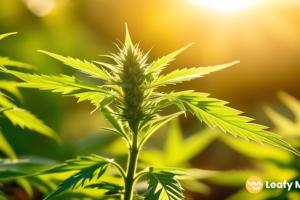
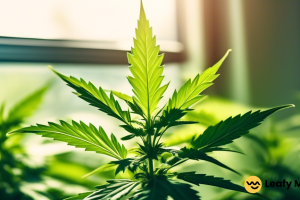





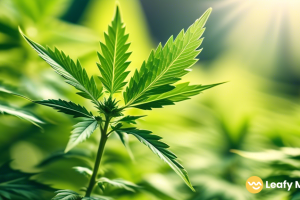
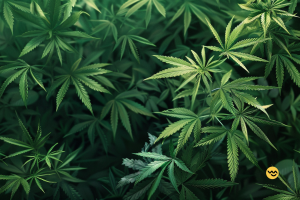
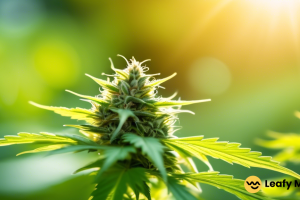
Leave a Reply